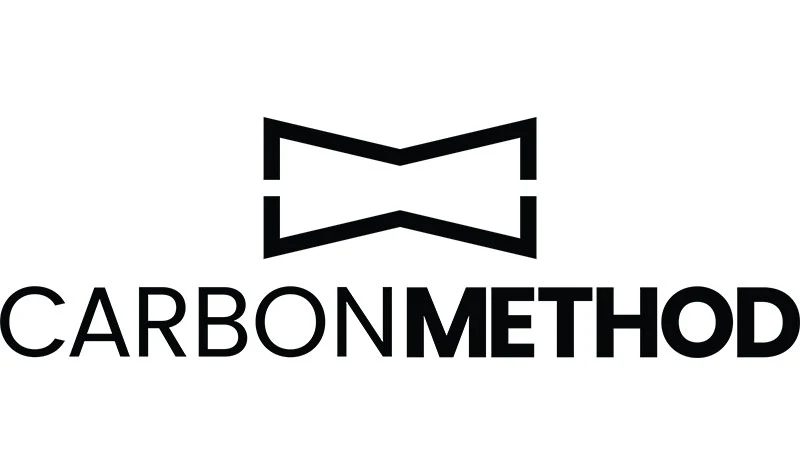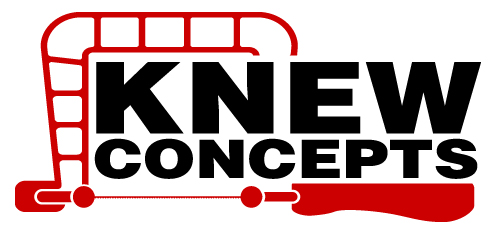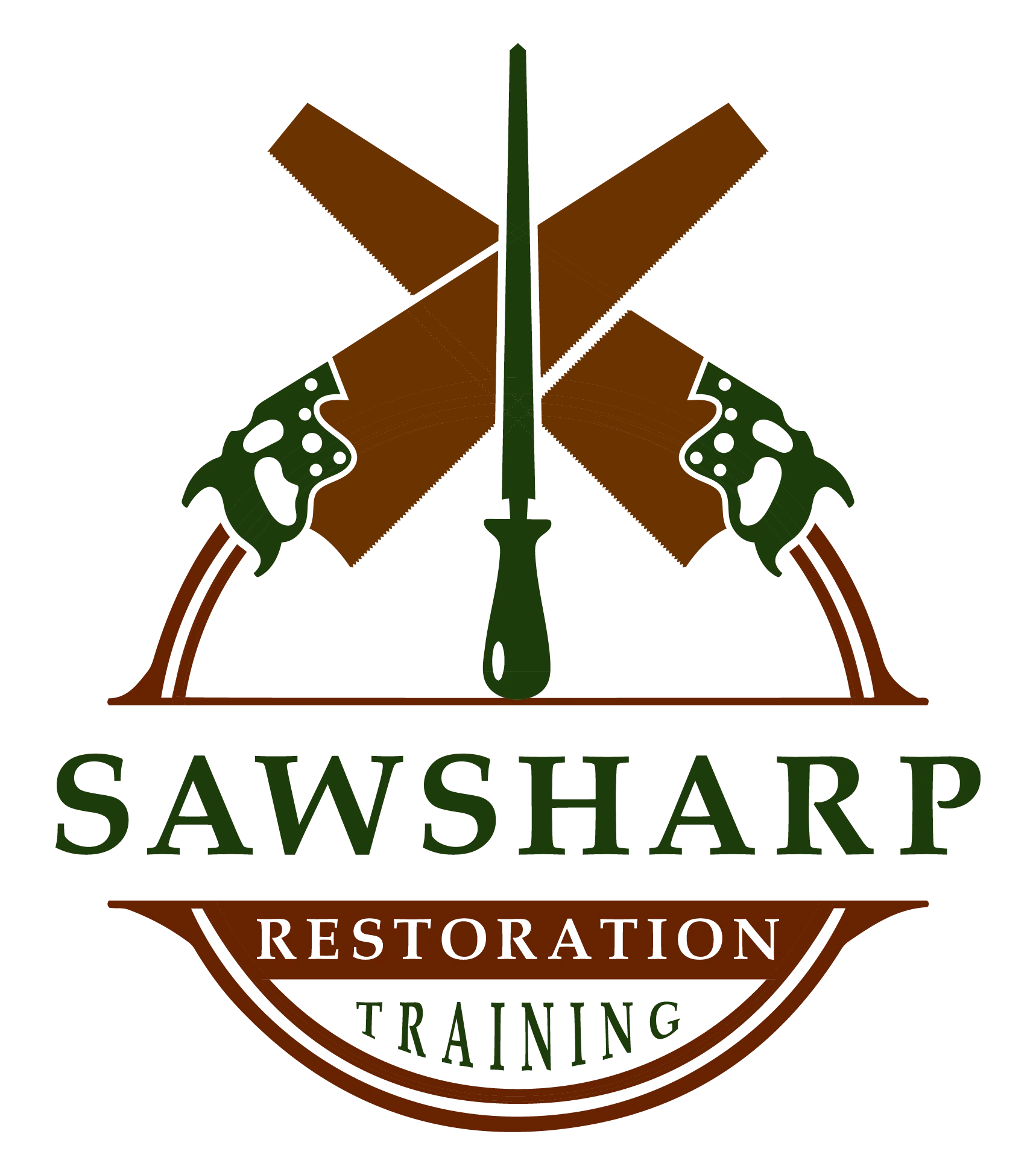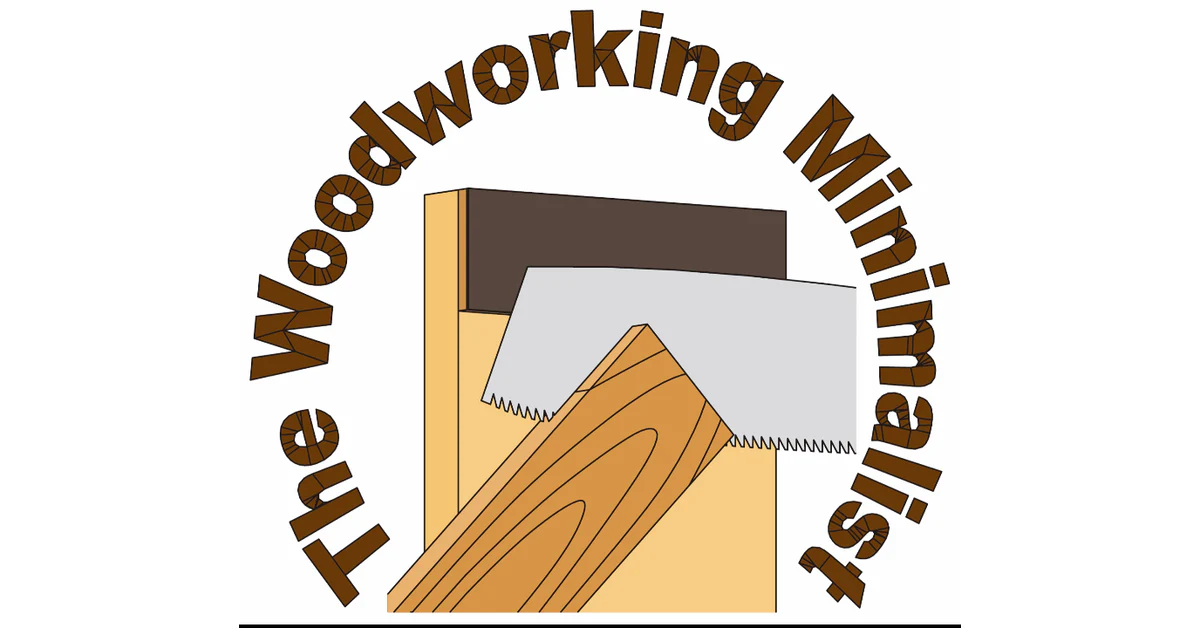Schedule
Please select day and click arrow to see more details.
- Thursday, Oct. 9
- Friday, Oct. 10
- Saturday, Oct. 11
- Friday
- Oct. 10
- Saturday
- Oct. 11
- Woodsmith Shop & Studio

From 3 to 5 p.m. on Thursday, October 9, you’ll have the chance to attend an open house tour of the shop and studios for Woodsmith, ShopNotes, and the Woodsmith ShopTV show. Meet the staff and get a behind-the-scenes look at upcoming projects and issues.
Location: 2143 Grand Ave, Des Moines, IA 50312
- 4-H Exhibits Building, Iowa State Fairgrounds
- Classroom A
- Classroom B
- Classroom C
- Classroom D
- Outside


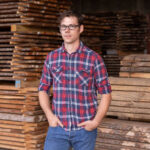
Much of the instruction available in woodturning is about artistic forms, such as bowls and boxes.
As a chair maker, Shea’s turning is much more mechanical, using the lathe to create tight joinery for long-lasting chairs. In this Demo, Shea will cover the various turning techniques needed for post and rung chair building.
Some of which include turning rung tenons within a few thousandths tolerance consistently, off-center turning arm tenons, end grain boring, and more. Shea will be teaching these techniques as he makes the different components of post and rung chair joints, then assembling them and cutting them apart to see and understand the mechanics behind the joints and how to use the lathe to make them.

The class will cover the five steps for successful gluing. From dry assembly to waiting for the glue to dry. Wood glues can affect the wood as it is being assembled and being prepared in advance will eliminate costly joint failures and frustrating disassembly. The discussion will focus on the steps needed to use wood glues with ease, what to watch out for when the glue hits the wood and why failures occur. We will also cover some frequently asked questions and why there are so many different wood glues. Bring your gluing questions as this is a discussion, not just a presentation.

In this presentation, Dave Richards shares his step-by-step process for using SketchUp to develop furniture designs—from initial concept through to a detailed 3D model and fully dimensioned shop drawings using LayOut. Ideal for woodworkers looking to streamline their workflow, this session offers practical insights into turning ideas into build-ready plans with precision and efficiency.
Dave Richards is a seasoned SketchUp expert with 22 years of experience and over 15 years as a dedicated SketchUp trainer. He specializes in teaching woodworkers how to effectively use SketchUp and LayOut to elevate their craft. Dave has contributed to Fine Woodworking Magazine, creating project plans, video courses, an ebook, and blog posts focused on applying SketchUp for woodworking. In addition to his teaching work, he offers freelance furniture design and produces detailed shop drawings for professional woodworkers, helping them bring their designs to life with precision and efficiency.
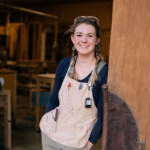
Wood movement is one of the most tricky things to navigate when building fine furniture. Join Alexis Dolese, who will talk and demonstrate how to process wood safely and efficiently while accounting for wood movement. She will also demonstrate skills for gluing up slabs, attaching tops with wood movement in mind, and working with curved parts to keep things as stable as possible. So you can build projects with confidence.
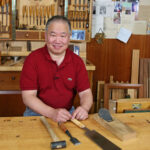
Japanese planes are often surrounded by an air of mystery, which is unfortunate, because understanding Japanese planes is surprisingly straightforward. This talk will cover how Japanese planes work, an overview of how to set up a Japanese plane, how they are used in real life, and the surprising similarities they have with western planes. And even if you don’t use Japanese planes, there will be good tips on using hand planes in general, including an easy approach to manage tearout, and how to use a chipbreaker.

Building a cabinet door is a project within a project. With it comes the opportunity to add personality and a unique look to your woodworking projects. During this presentation, Phil looks at principles of door design before breaking open a technique that allows you to build unique doors with simple, common router bits and techniques.


The purpose of this one-day block of instruction is to introduce students to saw selection, use and maintenance through proven traditional sawyering techniques that have endured throughout the centuries, back when communication moved at the speed of a horse or a sail. Much of the information below has been forgotten when generations of woodworkers following the WWII era gravitated toward power tools. This one-day class will empower the student to know how to select and use handsaws, exercise proper form when sawing, and how to maintain/clean these saws.
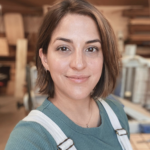
Creating small production runs of furniture or products can be streamlined in even a smaller shop with a few thoughtful adjustments and approaches to your work. I’ll walk you through the techniques, setups, and strategies I use to streamline my workflow: from things like shop layout, milling, and jig making.
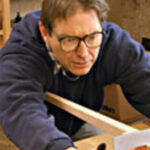
If there had been a Critter Cam on the front door of my new small shop when I moved in, oh what a tale it would tell. I had moved from a 10,000 sq. ft. shop into a 600 foot one. [I am not good at math.] This shop is my fifth ‘final’ one. Setting up each has been a joy and a job that never seems finished.
The Setting Up Shop lecture is my take on the important things for a furniture-making space. See the caveat right there means I can leave out a table saw, although I have one. This talk will free you up to think about your own space in a new light.
What are the shop monuments that should be set and left in place? What are the things you can tear down and put away? How do you lay out a new shop if you’re not sure what you’ll build? And how do you dig yourself out from the tiny paths all your tools and wood and jigs and forms have created for you now?
I will discuss Shop Flow, Concepts of Woodworking, Hand Tools & Machines, and Strategies for Building. This chat will offer you a template for laying out a new shop or managing one that is impossible now to move through.
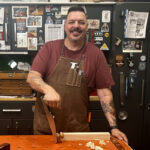
A workbench is more than just a flat surface—it’s a trusted partner, a creative platform, and, let’s be honest, sometimes a really expensive junk collector. In this entertaining and insightful lecture, Vic Tesolin explores the modern MFT-style workbench and how it fits into today’s workshop.
Gone are the days when every bench needed to be a beefy behemoth built from three trees and weighing more than a truck. Vic challenges the romanticized notion that bench design peaked in the 18th century and hasn’t evolved since. Instead, he’ll demonstrate how modern benches—especially multifunction tables (MFTs)—offer practical, flexible workholding for both hand tool purists and power tool junkies alike.
So whether you’re a traditionalist with a soft spot for Roubo or a minimalist trying to make the most of a single-car garage, this talk and demonstrations will help you rethink what a workbench needs to be in the modern age. Expect some laughs, a few strong opinions, and a refreshing perspective on this cornerstone of the woodworking shop.
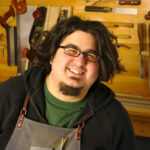
In this presentation, Ben Strano shows woodworkers how to use Fusion 360’s parametric modeling tools to streamline design and build processes. By defining key dimensions—like thickness, length, or angles—as parameters, entire models can update automatically with a single change, making it easy to adapt projects for different materials or sizes. Ben will demonstrate practical applications, highlighting how parametric workflows save time in the shop and allow for quick changes to a design. T

Unlock the secrets of quartersawn lumber in this demonstration for woodworkers who want to get the most out of their materials. We’ll walk through the process of quartersawing on a sawmill—from log selection to cut strategy—showing how to produce boards with unmatched grain consistency, stability, and beauty. Whether you’re sourcing your own logs or working with a local sawyer, you’ll gain the knowledge to ask for exactly what you need and understand what makes quartersawn wood so prized for fine furniture, cabinetry, and heirloom projects.


Wood movement is one of the most tricky things to navigate when building fine furniture. Join Alexis Dolese, who will talk and demonstrate how to process wood safely and efficiently while accounting for wood movement. She will also demonstrate skills for gluing up slabs, attaching tops with wood movement in mind, and working with curved parts to keep things as stable as possible. So you can build projects with confidence.

The purpose of this one-day block of instruction is to introduce students to saw selection, use and maintenance through proven traditional sawyering techniques that have endured throughout the centuries, back when communication moved at the speed of a horse or a sail. Much of the information below has been forgotten when generations of woodworkers following the WWII era gravitated toward power tools. This one-day class will empower the student to know how to select and use handsaws, exercise proper form when sawing, and how to maintain/clean these saws.

If there had been a Critter Cam on the front door of my new small shop when I moved in, oh what a tale it would tell. I had moved from a 10,000 sq. ft. shop into a 600 foot one. [I am not good at math.] This shop is my fifth ‘final’ one. Setting up each has been a joy and a job that never seems finished.
The Setting Up Shop lecture is my take on the important things for a furniture-making space. See the caveat right there means I can leave out a table saw, although I have one. This talk will free you up to think about your own space in a new light.
What are the shop monuments that should be set and left in place? What are the things you can tear down and put away? How do you lay out a new shop if you’re not sure what you’ll build? And how do you dig yourself out from the tiny paths all your tools and wood and jigs and forms have created for you now?
I will discuss Shop Flow, Concepts of Woodworking, Hand Tools & Machines, and Strategies for Building. This chat will offer you a template for laying out a new shop or managing one that is impossible now to move through.

Much of the instruction available in woodturning is about artistic forms, such as bowls and boxes.
As a chair maker, Shea’s turning is much more mechanical, using the lathe to create tight joinery for long-lasting chairs. In this Demo, Shea will cover the various turning techniques needed for post and rung chair building.
Some of which include turning rung tenons within a few thousandths tolerance consistently, off-center turning arm tenons, end grain boring, and more. Shea will be teaching these techniques as he makes the different components of post and rung chair joints, then assembling them and cutting them apart to see and understand the mechanics behind the joints and how to use the lathe to make them.

Japanese planes are often surrounded by an air of mystery, which is unfortunate, because understanding Japanese planes is surprisingly straightforward. This talk will cover how Japanese planes work, an overview of how to set up a Japanese plane, how they are used in real life, and the surprising similarities they have with western planes. And even if you don’t use Japanese planes, there will be good tips on using hand planes in general, including an easy approach to manage tearout, and how to use a chipbreaker.

The class will cover the five steps for successful gluing. From dry assembly to waiting for the glue to dry. Wood glues can affect the wood as it is being assembled and being prepared in advance will eliminate costly joint failures and frustrating disassembly. The discussion will focus on the steps needed to use wood glues with ease, what to watch out for when the glue hits the wood and why failures occur. We will also cover some frequently asked questions and why there are so many different wood glues. Bring your gluing questions as this is a discussion, not just a presentation.

Building a cabinet door is a project within a project. With it comes the opportunity to add personality and a unique look to your woodworking projects. During this presentation, Phil looks at principles of door design before breaking open a technique that allows you to build unique doors with simple, common router bits and techniques.

Creating small production runs of furniture or products can be streamlined in even a smaller shop with a few thoughtful adjustments and approaches to your work. I’ll walk you through the techniques, setups, and strategies I use to streamline my workflow: from things like shop layout, milling, and jig making.

In this presentation, Dave Richards shares his step-by-step process for using SketchUp to develop furniture designs—from initial concept through to a detailed 3D model and fully dimensioned shop drawings using LayOut. Ideal for woodworkers looking to streamline their workflow, this session offers practical insights into turning ideas into build-ready plans with precision and efficiency.
Dave Richards is a seasoned SketchUp expert with 22 years of experience and over 15 years as a dedicated SketchUp trainer. He specializes in teaching woodworkers how to effectively use SketchUp and LayOut to elevate their craft. Dave has contributed to Fine Woodworking Magazine, creating project plans, video courses, an ebook, and blog posts focused on applying SketchUp for woodworking. In addition to his teaching work, he offers freelance furniture design and produces detailed shop drawings for professional woodworkers, helping them bring their designs to life with precision and efficiency.

A workbench is more than just a flat surface—it’s a trusted partner, a creative platform, and, let’s be honest, sometimes a really expensive junk collector. In this entertaining and insightful lecture, Vic Tesolin explores the modern MFT-style workbench and how it fits into today’s workshop.
Gone are the days when every bench needed to be a beefy behemoth built from three trees and weighing more than a truck. Vic challenges the romanticized notion that bench design peaked in the 18th century and hasn’t evolved since. Instead, he’ll demonstrate how modern benches—especially multifunction tables (MFTs)—offer practical, flexible workholding for both hand tool purists and power tool junkies alike.
So whether you’re a traditionalist with a soft spot for Roubo or a minimalist trying to make the most of a single-car garage, this talk and demonstrations will help you rethink what a workbench needs to be in the modern age. Expect some laughs, a few strong opinions, and a refreshing perspective on this cornerstone of the woodworking shop.

In this presentation, Ben Strano shows woodworkers how to use Fusion 360’s parametric modeling tools to streamline design and build processes. By defining key dimensions—like thickness, length, or angles—as parameters, entire models can update automatically with a single change, making it easy to adapt projects for different materials or sizes. Ben will demonstrate practical applications, highlighting how parametric workflows save time in the shop and allow for quick changes to a design. T

Unlock the secrets of quartersawn lumber in this demonstration for woodworkers who want to get the most out of their materials. We’ll walk through the process of quartersawing on a sawmill—from log selection to cut strategy—showing how to produce boards with unmatched grain consistency, stability, and beauty. Whether you’re sourcing your own logs or working with a local sawyer, you’ll gain the knowledge to ask for exactly what you need and understand what makes quartersawn wood so prized for fine furniture, cabinetry, and heirloom projects.
- 4-H Exhibits Building, Iowa State Fairgrounds
- Classroom A
- Classroom B
- Classroom C
- Classroom D
- Outside



The drawknife and spoke shave do the heavy lifting in post and rung chair building. In this demo, Shea will cover how to use both of these tools effectively, talking through blade geometry, bevel up versus bevel down, flat-bottomed versus curved bottom, and more. Shea will go over using a shave horse (the bench vise of a chair maker), proper tool grip, posture, and using these tools to shape a chair leg from square to round.

Building a cabinet door is a project within a project. With it comes the opportunity to add personality and a unique look to your woodworking projects. During this presentation, Phil looks at principles of door design before breaking open a technique that allows you to build unique doors with simple, common router bits and techniques.

In this presentation, Ben Strano shows woodworkers how to use Fusion 360’s parametric modeling tools to streamline design and build processes. By defining key dimensions—like thickness, length, or angles—as parameters, entire models can update automatically with a single change, making it easy to adapt projects for different materials or sizes. Ben will demonstrate practical applications, highlighting how parametric workflows save time in the shop and allow for quick changes to a design. T

The purpose of this one-day block of instruction is to introduce students to saw selection, use and maintenance through proven traditional sawyering techniques that have endured throughout the centuries, back when communication moved at the speed of a horse or a sail. Much of the information below has been forgotten when generations of woodworkers following the WWII era gravitated toward power tools. This one-day class will empower the student to know how to select and use handsaws, exercise proper form when sawing, and how to maintain/clean these saws.

Creating small production runs of furniture or products can be streamlined in even a smaller shop with a few thoughtful adjustments and approaches to your work. I’ll walk you through the techniques, setups, and strategies I use to streamline my workflow: from things like shop layout, milling, and jig making.

A workbench is more than just a flat surface—it’s a trusted partner, a creative platform, and, let’s be honest, sometimes a really expensive junk collector. In this entertaining and insightful lecture, Vic Tesolin explores the modern MFT-style workbench and how it fits into today’s workshop.
Gone are the days when every bench needed to be a beefy behemoth built from three trees and weighing more than a truck. Vic challenges the romanticized notion that bench design peaked in the 18th century and hasn’t evolved since. Instead, he’ll demonstrate how modern benches—especially multifunction tables (MFTs)—offer practical, flexible workholding for both hand tool purists and power tool junkies alike.
So whether you’re a traditionalist with a soft spot for Roubo or a minimalist trying to make the most of a single-car garage, this talk and demonstrations will help you rethink what a workbench needs to be in the modern age. Expect some laughs, a few strong opinions, and a refreshing perspective on this cornerstone of the woodworking shop.


If there had been a Critter Cam on the front door of my new small shop when I moved in, oh what a tale it would tell. I had moved from a 10,000 sq. ft. shop into a 600 foot one. [I am not good at math.] This shop is my fifth ‘final’ one. Setting up each has been a joy and a job that never seems finished.
The Setting Up Shop lecture is my take on the important things for a furniture-making space. See the caveat right there means I can leave out a table saw, although I have one. This talk will free you up to think about your own space in a new light.
What are the shop monuments that should be set and left in place? What are the things you can tear down and put away? How do you lay out a new shop if you’re not sure what you’ll build? And how do you dig yourself out from the tiny paths all your tools and wood and jigs and forms have created for you now?
I will discuss Shop Flow, Concepts of Woodworking, Hand Tools & Machines, and Strategies for Building. This chat will offer you a template for laying out a new shop or managing one that is impossible now to move through.

Wood movement is one of the most tricky things to navigate when building fine furniture. Join Alexis Dolese, who will talk and demonstrate how to process wood safely and efficiently while accounting for wood movement. She will also demonstrate skills for gluing up slabs, attaching tops with wood movement in mind, and working with curved parts to keep things as stable as possible. So you can build projects with confidence.

In this presentation, Dave Richards shares his step-by-step process for using SketchUp to develop furniture designs—from initial concept through to a detailed 3D model and fully dimensioned shop drawings using LayOut. Ideal for woodworkers looking to streamline their workflow, this session offers practical insights into turning ideas into build-ready plans with precision and efficiency.
Dave Richards is a seasoned SketchUp expert with 22 years of experience and over 15 years as a dedicated SketchUp trainer. He specializes in teaching woodworkers how to effectively use SketchUp and LayOut to elevate their craft. Dave has contributed to Fine Woodworking Magazine, creating project plans, video courses, an ebook, and blog posts focused on applying SketchUp for woodworking. In addition to his teaching work, he offers freelance furniture design and produces detailed shop drawings for professional woodworkers, helping them bring their designs to life with precision and efficiency.

Japanese planes are often surrounded by an air of mystery, which is unfortunate, because understanding Japanese planes is surprisingly straightforward. This talk will cover how Japanese planes work, an overview of how to set up a Japanese plane, how they are used in real life, and the surprising similarities they have with western planes. And even if you don’t use Japanese planes, there will be good tips on using hand planes in general, including an easy approach to manage tear-out, and how to use a chipbreaker.

Unlock the secrets of quartersawn lumber in this demonstration for woodworkers who want to get the most out of their materials. We’ll walk through the process of quartersawing on a sawmill—from log selection to cut strategy—showing how to produce boards with unmatched grain consistency, stability, and beauty. Whether you’re sourcing your own logs or working with a local sawyer, you’ll gain the knowledge to ask for exactly what you need and understand what makes quartersawn wood so prized for fine furniture, cabinetry, and heirloom projects.

The class will cover the five steps for successful gluing. From dry assembly to waiting for the glue to dry. Wood glues can affect the wood as it is being assembled and being prepared in advance will eliminate costly joint failures and frustrating disassembly. The discussion will focus on the steps needed to use wood glues with ease, what to watch out for when the glue hits the wood and why failures occur. We will also cover some frequently asked questions and why there are so many different wood glues. Bring your gluing questions as this is a discussion, not just a presentation.

We’ll be hosting a live recording of Fine Woodworking’s podcast, Shop Talk Live, with audience Q&A.

The purpose of this one-day block of instruction is to introduce students to saw selection, use and maintenance through proven traditional sawyering techniques that have endured throughout the centuries, back when communication moved at the speed of a horse or a sail. Much of the information below has been forgotten when generations of woodworkers following the WWII era gravitated toward power tools. This one-day class will empower the student to know how to select and use handsaws, exercise proper form when sawing, and how to maintain/clean these saws.

If there had been a Critter Cam on the front door of my new small shop when I moved in, oh what a tale it would tell. I had moved from a 10,000 sq. ft. shop into a 600 foot one. [I am not good at math.] This shop is my fifth ‘final’ one. Setting up each has been a joy and a job that never seems finished.
The Setting Up Shop lecture is my take on the important things for a furniture-making space. See the caveat right there means I can leave out a table saw, although I have one. This talk will free you up to think about your own space in a new light.
What are the shop monuments that should be set and left in place? What are the things you can tear down and put away? How do you lay out a new shop if you’re not sure what you’ll build? And how do you dig yourself out from the tiny paths all your tools and wood and jigs and forms have created for you now?
I will discuss Shop Flow, Concepts of Woodworking, Hand Tools & Machines, and Strategies for Building. This chat will offer you a template for laying out a new shop or managing one that is impossible now to move through.

The drawknife and spoke shave do the heavy lifting in post and rung chair building. In this demo, Shea will cover how to use both of these tools effectively, talking through blade geometry, bevel up versus bevel down, flat-bottomed versus curved bottom, and more. Shea will go over using a shave horse (the bench vise of a chair maker), proper tool grip, posture, and using these tools to shape a chair leg from square to round.

Japanese planes are often surrounded by an air of mystery, which is unfortunate, because understanding Japanese planes is surprisingly straightforward. This talk will cover how Japanese planes work, an overview of how to set up a Japanese plane, how they are used in real life, and the surprising similarities they have with western planes. And even if you don’t use Japanese planes, there will be good tips on using hand planes in general, including an easy approach to manage tear-out, and how to use a chipbreaker.

Building a cabinet door is a project within a project. With it comes the opportunity to add personality and a unique look to your woodworking projects. During this presentation, Phil looks at principles of door design before breaking open a technique that allows you to build unique doors with simple, common router bits and techniques.

Creating small production runs of furniture or products can be streamlined in even a smaller shop with a few thoughtful adjustments and approaches to your work. I’ll walk you through the techniques, setups, and strategies I use to streamline my workflow: from things like shop layout, milling, and jig making.

Wood movement is one of the most tricky things to navigate when building fine furniture. Join Alexis Dolese, who will talk and demonstrate how to process wood safely and efficiently while accounting for wood movement. She will also demonstrate skills for gluing up slabs, attaching tops with wood movement in mind, and working with curved parts to keep things as stable as possible. So you can build projects with confidence.

The class will cover the five steps for successful gluing. From dry assembly to waiting for the glue to dry. Wood glues can affect the wood as it is being assembled and being prepared in advance will eliminate costly joint failures and frustrating disassembly. The discussion will focus on the steps needed to use wood glues with ease, what to watch out for when the glue hits the wood and why failures occur. We will also cover some frequently asked questions and why there are so many different wood glues. Bring your gluing questions as this is a discussion, not just a presentation.

In this presentation, Ben Strano shows woodworkers how to use Fusion 360’s parametric modeling tools to streamline design and build processes. By defining key dimensions—like thickness, length, or angles—as parameters, entire models can update automatically with a single change, making it easy to adapt projects for different materials or sizes. Ben will demonstrate practical applications, highlighting how parametric workflows save time in the shop and allow for quick changes to a design. T

A workbench is more than just a flat surface—it’s a trusted partner, a creative platform, and, let’s be honest, sometimes a really expensive junk collector. In this entertaining and insightful lecture, Vic Tesolin explores the modern MFT-style workbench and how it fits into today’s workshop.
Gone are the days when every bench needed to be a beefy behemoth built from three trees and weighing more than a truck. Vic challenges the romanticized notion that bench design peaked in the 18th century and hasn’t evolved since. Instead, he’ll demonstrate how modern benches—especially multifunction tables (MFTs)—offer practical, flexible workholding for both hand tool purists and power tool junkies alike.
So whether you’re a traditionalist with a soft spot for Roubo or a minimalist trying to make the most of a single-car garage, this talk and demonstrations will help you rethink what a workbench needs to be in the modern age. Expect some laughs, a few strong opinions, and a refreshing perspective on this cornerstone of the woodworking shop.

In this presentation, Dave Richards shares his step-by-step process for using SketchUp to develop furniture designs—from initial concept through to a detailed 3D model and fully dimensioned shop drawings using LayOut. Ideal for woodworkers looking to streamline their workflow, this session offers practical insights into turning ideas into build-ready plans with precision and efficiency.
Dave Richards is a seasoned SketchUp expert with 22 years of experience and over 15 years as a dedicated SketchUp trainer. He specializes in teaching woodworkers how to effectively use SketchUp and LayOut to elevate their craft. Dave has contributed to Fine Woodworking Magazine, creating project plans, video courses, an ebook, and blog posts focused on applying SketchUp for woodworking. In addition to his teaching work, he offers freelance furniture design and produces detailed shop drawings for professional woodworkers, helping them bring their designs to life with precision and efficiency.

Unlock the secrets of quartersawn lumber in this demonstration for woodworkers who want to get the most out of their materials. We’ll walk through the process of quartersawing on a sawmill—from log selection to cut strategy—showing how to produce boards with unmatched grain consistency, stability, and beauty. Whether you’re sourcing your own logs or working with a local sawyer, you’ll gain the knowledge to ask for exactly what you need and understand what makes quartersawn wood so prized for fine furniture, cabinetry, and heirloom projects.
- Classroom B
- 4-H Exhibits Building
- Iowa State Fairgrounds
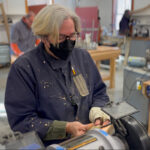
The lathe is a wonderful tool with many uses in a shop. its ability to control motor speed makes it great for, sharpening, honing, sanding and shaping. This demo shows some of the tricks and techniques I have used in my 40-year career as a production woodturner. Stance, technique, sharpening, and strategies for executing are some of the topics that will be covered. I will cover how to easily make cylinders, tapers, reproduce shapes, and creating perfect tenons every time. Join me for a clear concise fast-paced demo on why the lathe is one of the most important tools in your shop.

The lathe is a wonderful tool with many uses in a shop. its ability to control motor speed makes it great for, sharpening, honing, sanding and shaping. This demo shows some of the tricks and techniques I have used in my 40-year career as a production woodturner. Stance, technique, sharpening, and strategies for executing are some of the topics that will be covered. I will cover how to easily make cylinders, tapers, reproduce shapes, and creating perfect tenons every time. Join me for a clear concise fast-paced demo on why the lathe is one of the most important tools in your shop.

The lathe is a wonderful tool with many uses in a shop. its ability to control motor speed makes it great for, sharpening, honing, sanding and shaping. This demo shows some of the tricks and techniques I have used in my 40-year career as a production woodturner. Stance, technique, sharpening, and strategies for executing are some of the topics that will be covered. I will cover how to easily make cylinders, tapers, reproduce shapes, and creating perfect tenons every time. Join me for a clear concise fast-paced demo on why the lathe is one of the most important tools in your shop.
- Classroom B
- 4-H Exhibits Building
- Iowa State Fairgrounds

The lathe is a wonderful tool with many uses in a shop. its ability to control motor speed makes it great for, sharpening, honing, sanding and shaping. This demo shows some of the tricks and techniques I have used in my 40-year career as a production woodturner. Stance, technique, sharpening, and strategies for executing are some of the topics that will be covered. I will cover how to easily make cylinders, tapers, reproduce shapes, and creating perfect tenons every time. Join me for a clear concise fast-paced demo on why the lathe is one of the most important tools in your shop.

The lathe is a wonderful tool with many uses in a shop. its ability to control motor speed makes it great for, sharpening, honing, sanding and shaping. This demo shows some of the tricks and techniques I have used in my 40-year career as a production woodturner. Stance, technique, sharpening, and strategies for executing are some of the topics that will be covered. I will cover how to easily make cylinders, tapers, reproduce shapes, and creating perfect tenons every time. Join me for a clear concise fast-paced demo on why the lathe is one of the most important tools in your shop.

The lathe is a wonderful tool with many uses in a shop. its ability to control motor speed makes it great for, sharpening, honing, sanding and shaping. This demo shows some of the tricks and techniques I have used in my 40-year career as a production woodturner. Stance, technique, sharpening, and strategies for executing are some of the topics that will be covered. I will cover how to easily make cylinders, tapers, reproduce shapes, and creating perfect tenons every time. Join me for a clear concise fast-paced demo on why the lathe is one of the most important tools in your shop.
- Classroom B
- 4-H Exhibits Building
- Iowa State Fairgrounds

The lathe is a wonderful tool with many uses in a shop. its ability to control motor speed makes it great for, sharpening, honing, sanding and shaping. This demo shows some of the tricks and techniques I have used in my 40-year career as a production woodturner. Stance, technique, sharpening, and strategies for executing are some of the topics that will be covered. I will cover how to easily make cylinders, tapers, reproduce shapes, and creating perfect tenons every time. Join me for a clear concise fast-paced demo on why the lathe is one of the most important tools in your shop.

The lathe is a wonderful tool with many uses in a shop. its ability to control motor speed makes it great for, sharpening, honing, sanding and shaping. This demo shows some of the tricks and techniques I have used in my 40-year career as a production woodturner. Stance, technique, sharpening, and strategies for executing are some of the topics that will be covered. I will cover how to easily make cylinders, tapers, reproduce shapes, and creating perfect tenons every time. Join me for a clear concise fast-paced demo on why the lathe is one of the most important tools in your shop.

The lathe is a wonderful tool with many uses in a shop. its ability to control motor speed makes it great for, sharpening, honing, sanding and shaping. This demo shows some of the tricks and techniques I have used in my 40-year career as a production woodturner. Stance, technique, sharpening, and strategies for executing are some of the topics that will be covered. I will cover how to easily make cylinders, tapers, reproduce shapes, and creating perfect tenons every time. Join me for a clear concise fast-paced demo on why the lathe is one of the most important tools in your shop.
- Classroom B
- 4-H Exhibits Building
- Iowa State Fairgrounds

The lathe is a wonderful tool with many uses in a shop. its ability to control motor speed makes it great for, sharpening, honing, sanding and shaping. This demo shows some of the tricks and techniques I have used in my 40-year career as a production woodturner. Stance, technique, sharpening, and strategies for executing are some of the topics that will be covered. I will cover how to easily make cylinders, tapers, reproduce shapes, and creating perfect tenons every time. Join me for a clear concise fast-paced demo on why the lathe is one of the most important tools in your shop.

The lathe is a wonderful tool with many uses in a shop. its ability to control motor speed makes it great for, sharpening, honing, sanding and shaping. This demo shows some of the tricks and techniques I have used in my 40-year career as a production woodturner. Stance, technique, sharpening, and strategies for executing are some of the topics that will be covered. I will cover how to easily make cylinders, tapers, reproduce shapes, and creating perfect tenons every time. Join me for a clear concise fast-paced demo on why the lathe is one of the most important tools in your shop.

The lathe is a wonderful tool with many uses in a shop. its ability to control motor speed makes it great for, sharpening, honing, sanding and shaping. This demo shows some of the tricks and techniques I have used in my 40-year career as a production woodturner. Stance, technique, sharpening, and strategies for executing are some of the topics that will be covered. I will cover how to easily make cylinders, tapers, reproduce shapes, and creating perfect tenons every time. Join me for a clear concise fast-paced demo on why the lathe is one of the most important tools in your shop.




